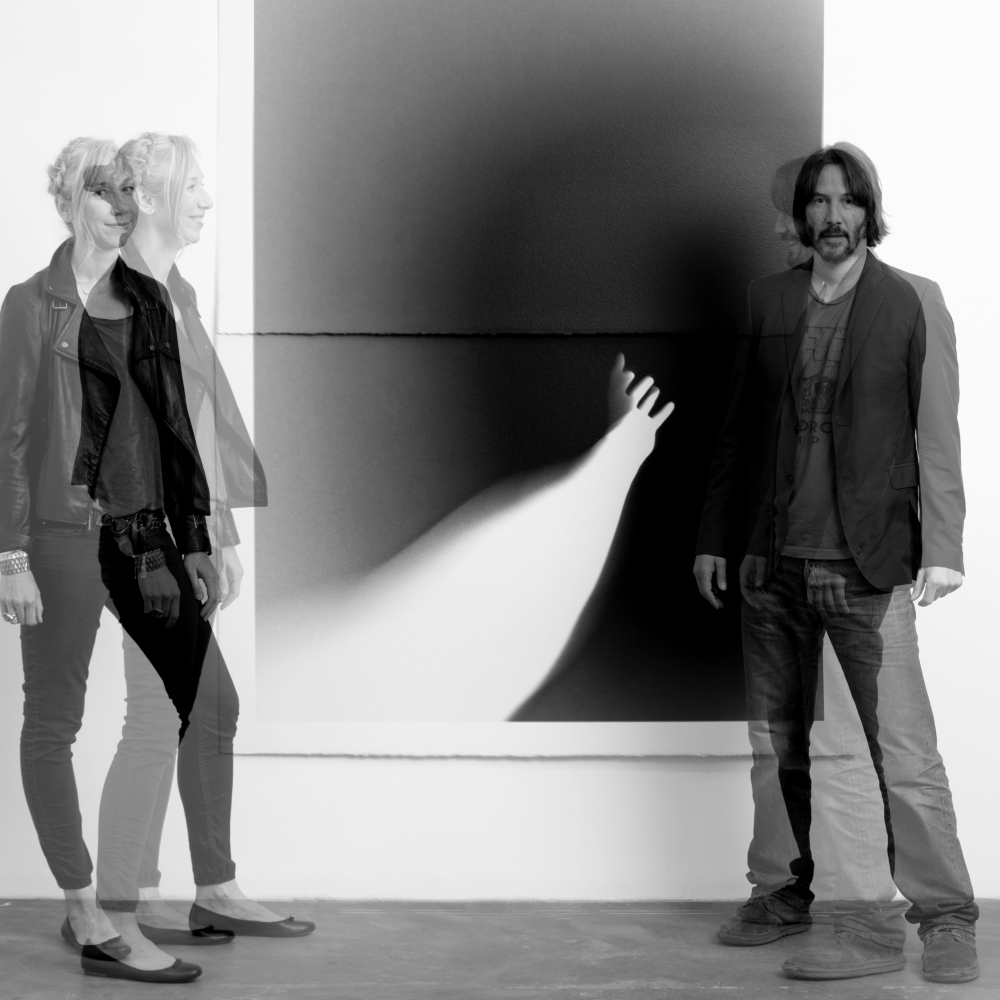Alexandra Grant is no fool. She understands that when the french editor for Playboy asks you to do something, you say, “what do you have in mind?” Grant is a visual artist, but her work is inextricably linked to language. She often uses literature and exchanges with writers as the foundation for her paintings, drawings, photographs, and sculptures. In 2013, Grant and actor/writer Keanu Reeves collaborated on their second project, Shadows.
Initially the project took shape because, as Grant explains it, “The French editor of Playboy and I were at a café in Paris and he asked if Keanu and I would do one picture for a magazine called Zeitgeist.
Hold right there. It’s not what you think given the editor making the request. Grant explains, “We had worked together on another project called Ode to Happiness so it was a natural collaboration. Zeitgeist wanted my photography and Keanu’s poetry.”
When the people behind Zeitgeist informed Grant of the theme, shadows, she sent Reeves an email invitation, quoting Malcolm Lowry’s Under the Volcano, “I have no house, only a shadow. But whenever you are in need of a shadow, my shadow is yours.” Who wouldn’t bite?
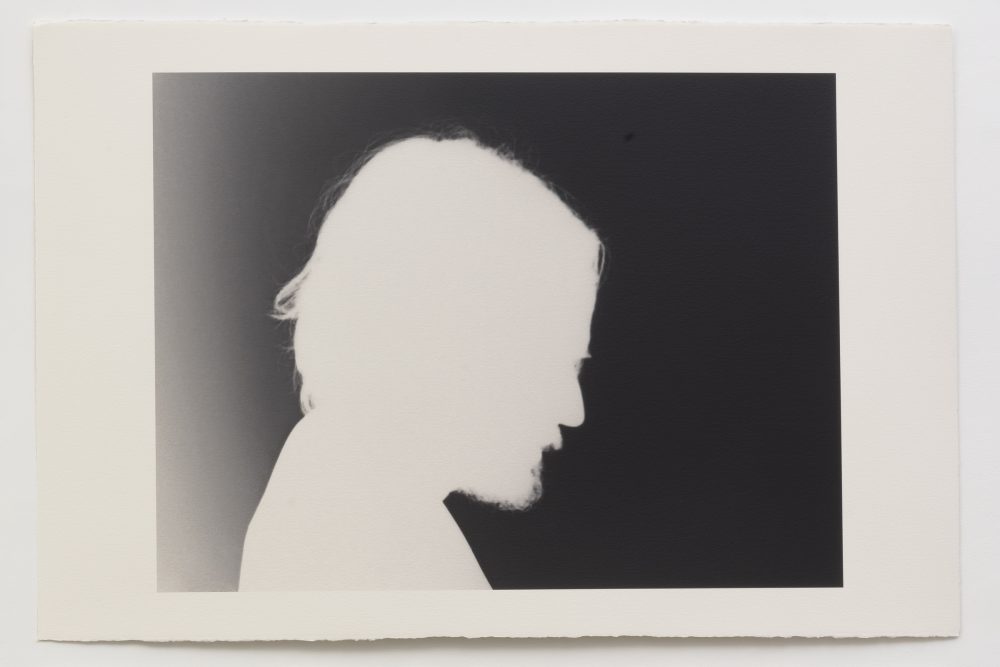
With that invitation began a collaboration that did not actually appeared in Zeitgeist because that project never came to fruition, but Grant and Reeves ran with it anyway. Reeves says, “Shadows are evocative—provocative—to me. I liked the idea of writing in short form, something similar to haiku. What struck me about the idea of shadows was this play between the interior and the exterior, and I tried to capture that in the word play.”
Since then, the project has taken flight—an art exhibition at ACME Gallery in L.A., a book which launched at LACMA (L.A. County Museum of Art), and an exhibition that will be opening at Ochi Gallery in Sun Valley, Idaho, this summer.
About the process, Reeves says it was a back-and-forth experience, a lot of coming together to work and then going off to craft their individual parts. “We first shot in my apartment in New York, used one light source, moved my dining room table, and shot my shadow against the wall.” Grant continues, “Having worked together before, we already had this trust; It allowed us to experiment.”
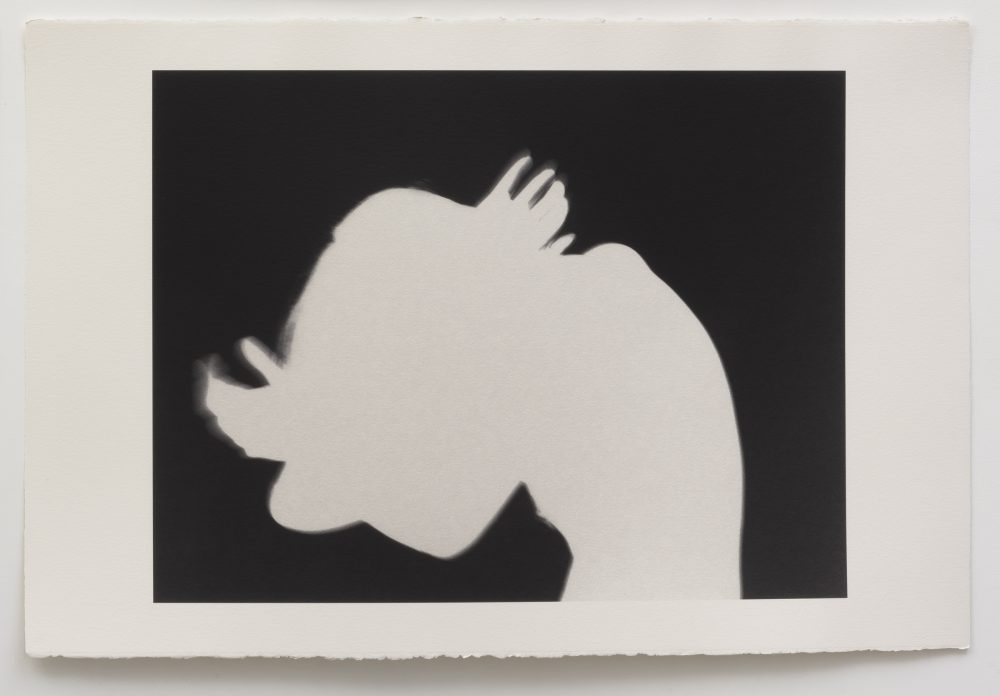
The final collection of photographs is a selection that they, together and with the publisher, curated down from many possible photographs. They started with Reeves’ words and tried to find the right images to match the thought, sentiment, or moment he captured in language. About the writing, Reeves says, “After we decided to do the project, I went down this path of self-reflection—and I kept coming back to the idea that shadows are at once personal and universal.”
The work is captivating because of the way it at once invites the reader in as a collaborator or confidante, yet keeps us at a distance as well. Reeves uses pronouns like “We, us, you, I” and invites the viewer to this intimate moment or revelation. And the way Grant captures Reeves—even in shadow form—is intimate. His hands reach out in our direction. The white of his arm is ethereal. The angle is longing embodied. He bends, bows, and cradles. He is at turns vulnerable, powerful, yielding, closed off, and open.
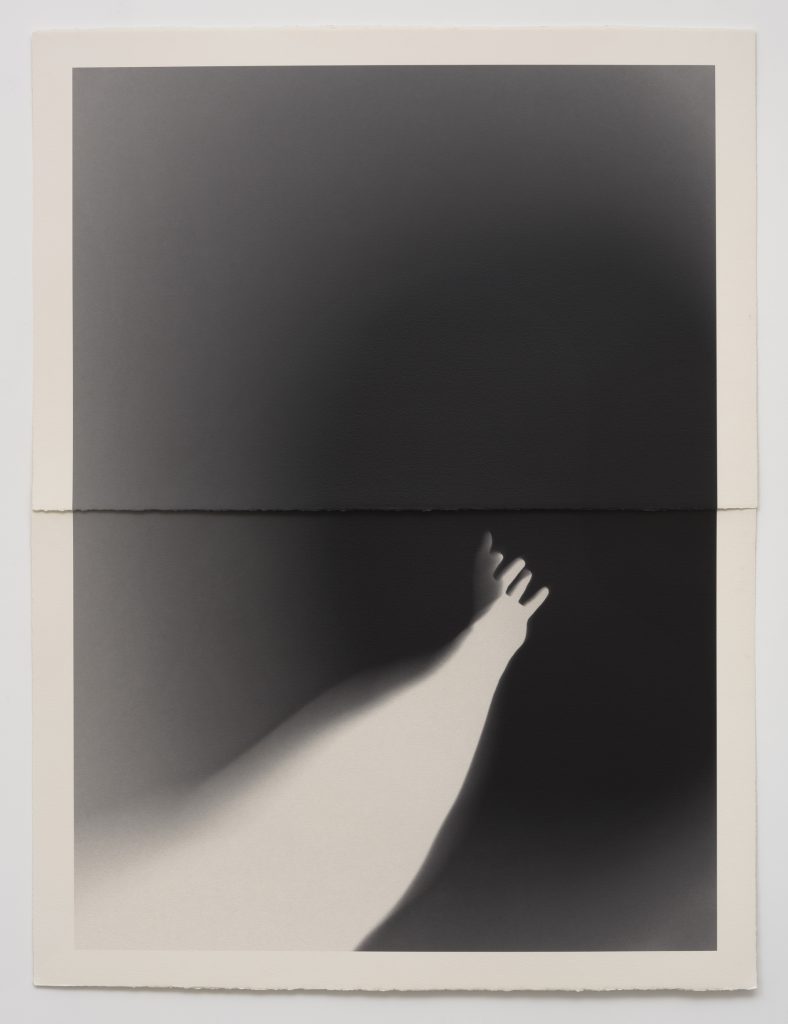
Ultimately, however, we’re not looking at Reeves, we’re seeing his shadow, often blurry or obscured. The effect? The viewer stands in this delicately balanced position between insider and outsider in a way that makes us reflect on the nature of shadows for ourselves. In that balance we feel the universal, yet intensely personal, nature of shadows.
Reflecting on this balance, Grant says, “That was exactly what we were going for. That’s what the shadow is all about. It’s caught between light and dark, and we wanted to capture the rainbow of possibilities.”
About photographing a celebrity like Reeves, Grant says, “We’re friends first, so our outside lives don’t really play into it.” She adds, directing this statement to Reeves, “So much of your life is spent with light reflecting off of you, I wanted your shadow to be the source of light.”
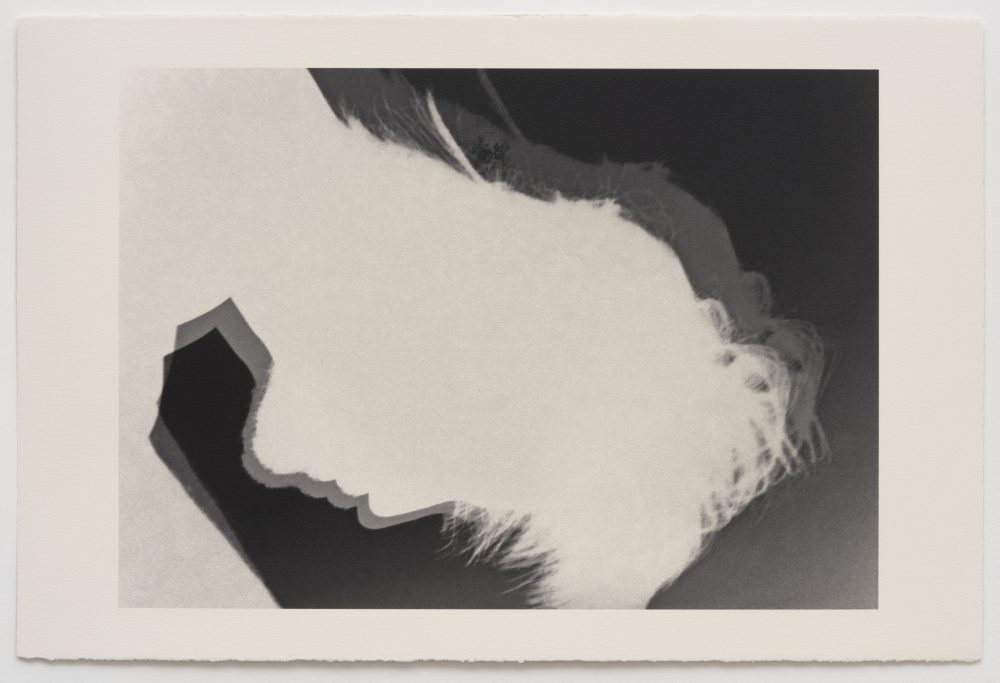
When Grant and Reeves describe the process, the word “play” dominates. Reeves says, “We were playing with emotion and how the form of the body elicits different emotions; we had a sense of play, and Alexandra definitely directed me—she wanted to put forth feeling as opposed to shape. There was something very freeing about it.”
Their work together, which mostly happened while Reeves was filming John Wick, has taken on a life of its own, and as Grant explains, “We are both very open to this adventure that Shadows is bringing. We’re thrilled to see how the book and the exhibition are being received. We’re excited to have it show at Ochi this summer; in June, we’ll be taking it to Art Basel in Switzerland.”
Grant and Reeves talk about the narrative arc that they wanted to construct in the book and the shows. The first poem by Reeves reads “I was born twisted/I don’t want to die.” And the final poem reads, “It’s my last chance.” Both statements are simple yet revelatory about our common condition. Grant reveals that the last image in the book is the only one that is actually of Reeves’ body and not his shadow. The image is Paired with Reeves’ sentiment, “It’s my last chance.” Grant says, “It was a way of saying visually that we’ve been looking at the shadow of a person, a distortion. But we close with the actual, the real. In that moment, we recognize a chance for rebirth and even greater openness.”




